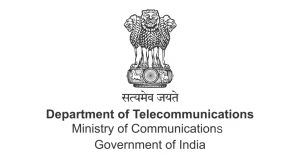TRAI’s Decisive Reply to DoT’s Back-Reference Paves the Way for India’s Telecom Future
The Telecom Regulatory Authority of India (TRAI) has formally replied to the Department of Telecommunications (DoT) regarding a back-reference on its earlier recommendations. This exchange marks a significant phase in the ongoing dialogue between the two bodies tasked with shaping the future of India’s telecom sector. The move comes at a time when the industry is navigating rapid technological changes and rising consumer expectations.
Understanding the Back-Reference
In regulatory terms, a back-reference occurs when the DoT seeks clarifications or modifications to TRAI’s earlier recommendations before moving toward policy implementation. In this case, the DoT had raised queries and sought further details to ensure that the proposed measures were practical, legally sound and aligned with the government’s broader telecom vision.
TRAI’s formal response addresses these points comprehensively, signaling its commitment to maintain transparency and cooperation while defending the technical and policy rationale behind its initial proposals.
What the Recommendations Were About
Although the exact contents of the recommendations have not been disclosed publicly in full detail, they are understood to relate to key areas such as spectrum allocation, service quality benchmarks and consumer rights protection. These areas are vital to both operators and subscribers as they influence service availability, pricing models and the level of competition in the industry.
The aim of the recommendations was to strike a balance between fostering industry growth and safeguarding consumer interests, an equilibrium that TRAI has repeatedly emphasized in its policy approach.
The Stakes for the Telecom Industry
India’s telecom market is one of the largest and fastest-growing in the world. Policy decisions in this space have ripple effects across sectors such as digital payments, e-commerce, education and healthcare. A clear and timely resolution between TRAI and DoT ensures that industry players can plan investments with certainty and deliver improved services to customers.
The back-reference and subsequent response are not just bureaucratic steps but essential processes that help fine-tune policies before they become binding regulations.
The Human Side of the Debate
While most public attention focuses on technology and market competition, these regulatory discussions have a human impact. Clear spectrum policies can improve mobile coverage in remote areas, better quality of service rules can reduce dropped calls and efficient regulation can lower costs for everyday users.

For millions of Indians who depend on affordable and reliable telecom services for work, education and daily life, the outcome of this exchange between TRAI and DoT is far from an abstract matter — it directly influences their connectivity and opportunities.
Building a Cooperative Framework
In its response, TRAI has not only addressed the specific points raised by DoT but also suggested avenues for future collaboration. This includes periodic consultations, data-sharing mechanisms and joint workshops to align technical perspectives with policy goals. Such cooperation reduces the risk of conflicting interpretations and creates a smoother path from recommendation to implementation.
By keeping the process open and consultative, both agencies aim to avoid delays and ensure that final policies reflect both regulatory expertise and practical execution considerations.
Industry and Public Reactions
Early signals from industry representatives suggest cautious optimism. Many operators welcome the continued dialogue and see it as a sign that the government is serious about creating stable and predictable rules. Consumer rights groups have also expressed hope that the final policies will strengthen protections without adding excessive costs to users.
However, some analysts warn that prolonged exchanges between TRAI and DoT could slow down much-needed reforms, especially in fast-evolving areas like 5G rollout and emerging digital services.

Conclusion: Toward a Balanced Telecom Future
TRAI’s formal response to DoT’s back-reference is more than just an administrative formality — it is a critical step toward shaping telecom policies that will define India’s digital landscape in the coming years. The careful review process helps ensure that recommendations are not only technically sound but also realistic and beneficial for both industry stakeholders and the general public.
In a sector where rapid innovation often clashes with regulatory lag, this collaborative approach offers a path to balanced, forward-looking policy. Whether it is enhancing rural connectivity, ensuring fair competition or preparing for next-generation technologies, the decisions made through such exchanges will touch the lives of millions.
If TRAI and DoT can continue to navigate these discussions with openness and a shared vision, India’s telecom sector can move confidently toward a future where technology serves people first and profits second — a future built on trust, clarity and common purpose.
Also read: https://channel6network.com/trump-and-putin-set-for-alaska-summit-on-15th/

